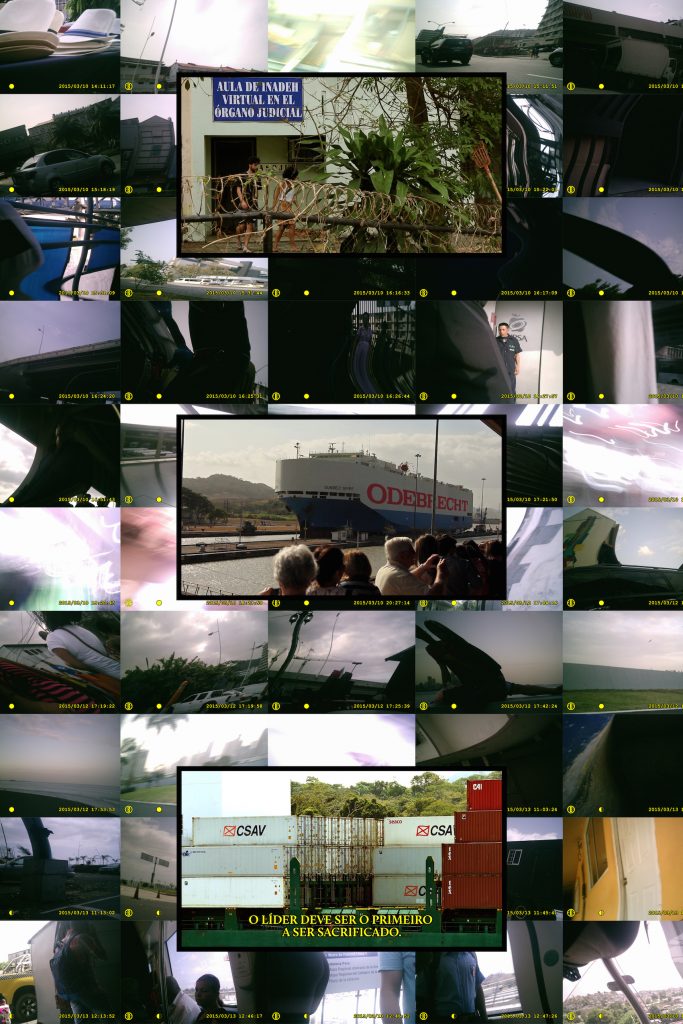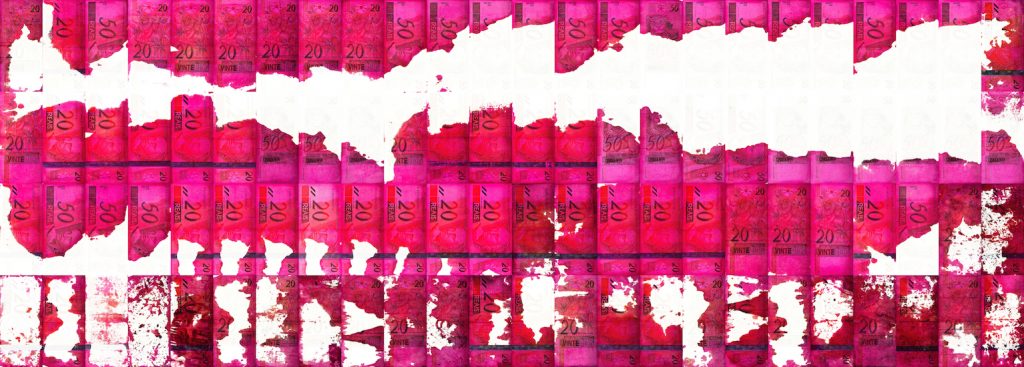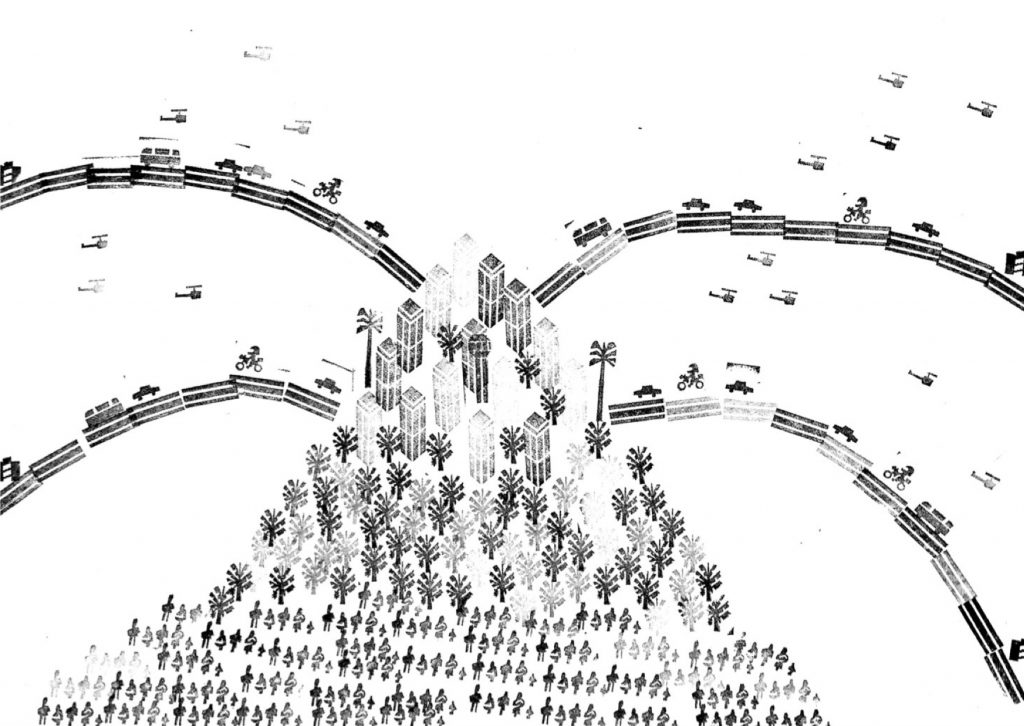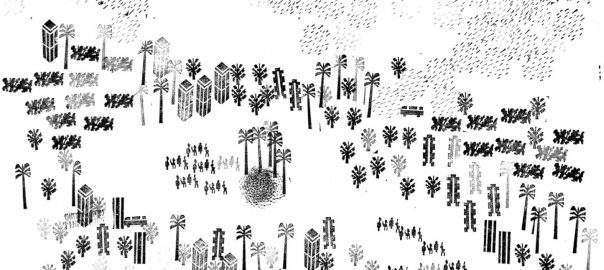This article by Pedro Victor Brandão is part of the project "Between Crowds and Empires", a multimedia online publication on the collaborative economy. It was firstly published in the Transnational Dialogues Journal 2016.
During the month of March 2015 I went to Panama along with the critic and curator Beatriz Lemos to develop a research after her invitation to join the Central-American phase of the project Lastro – intercâmbios livres em arte [free exchanges in art].
Researching the history of the country, we learned that Panama was under Spanish rule for almost 300 years (1538-1821). Previously part of the territory of Gran Colombia, in 1903 the United States of America and the Roosevelt administration, in dispute with Colombia, created the country, making the banking group JP Morgan the official fiscal agent of the new country. This was one of Roosevelt’s consolidations of the Monroe Doctrine in Central America. The creation of the country was based purely on commercial interests, including gaining full control of the Inter-Oceanic Canal that was under construction at the time, to be completed in 1914. The country’s image as a tax haven began there.

It can be said that we have also seen the emergence of a “fifth income”, a new form of financial maintenance beyond that of primitive accumulation, debt with interest, direct expropriation, and wage labour, from which we could already be immersed in a democracy of objects (Bryant, 2011). We live in a stacked society formed by an (almost) accidental mega-structure in which ‘things’, connected to each other, end up measuring and constantly redefining our reputation across the world, and by other human beings as well. From one perspective, we could say that we already have the tools to introduce an universal basic income, to reverse the consumer’s role in Globalised capitalism, and to ensure that these new levels of transparency are used in favour of, and not against, an ongoing revolution (Bratton, 2016). But on the other hand, we seem to be stuck in a definition of reality in which the crisis is the government itself (The Invisible Commitee, 2014).

In March 2015 we set off travelling through Panama for three weeks, with the plan of investigating both the cultural scene of the city (with visits to artists, galleries, journalists and museums), and the financial reality of the country. We ran into the country’s very fluid tax regime on numerous occasions. U.S. dollar loans were widely available and, being a foreigner, one can incorporate a shell company with the initial amount of just 100 dollars, without paying any tax. During our research we also came across the Brazilian company Odebrecht, which was present in most of the urban infrastructure works in the country. In the last 10 years this company has become the largest builder in Panama: its latest venture, started in May 2016, is the complete reconstruction of the city of Colón, on the Caribbean coast, which is the largest free trade zone in the West.
During our three weeks of research, we focused on two axes. The first axis, which generated the film-essay A oferta não equivale à procura [Supply does not equal demand], was the observation of some of Odebrecht’s works in Panama City. What most caught our attention was the Cinta Costera III, a bizarre maritime viaduct, which both cancels out the horizon line and threatens the status of the World Heritage Site of Casco Viejo, the historic centre of Panama City. Phases I, II and III of the construction have already been completed, but there is still a planned sequel phase IV.
Almost all the images of this film-essay have graphic changes through overlays and features that liquefy and pervert its documentary aspect. The accompanying captions are taken from an administrative technology manual, written in 1968 by the Executive Norberto Odebrecht (founder of the construction company), forming a kind of collage between mission and achievement. It is interesting to return to the Protestant origins of the company, now that the Lava-Jato [Car Wash] investigation is interrupting a cycle of public-private partnerships mediated by lobbies, influence peddling and donations to political campaigns, stretching back through 60 years of developmentalist strategies.
Some sequences show the new financial centre of the city, a skyline of very tall buildings, some of more than 80 floors. At night you can see the majority of them with the lights off. There is a direct relationship between money-laundering and the real estate market in Panama City. These properties serve as collateral for the opening of shell companies, and in some cases, can even function as currency, ensuring the financial stability of dangerous elites, such as bankers, drug dealers, dictators, and tax dodgers of all kinds.
The second axis, which led to the creation of the photographic series Cynthia nos vê de perto [Cynthia sees us closely], functions as a kind of counterpoint; a self-surveillance experiment, using a camera designed to photograph animals. Called a ‘trail camera’ or ‘camera trap’, the camera is triggered by a motion sensor and heat, often used by biologists and foresters in the field. Just as we were investigating the presence of speculative capital, the camera (named ‘Cynthia’, in honour of the Cinta Costera) was investigating us, accompanying us in most of our walks through the city. It is a commentary on the global surveillance state to which we are all currently exposed, and a way to break the monopoly of the product that privacy has become.

Certainly, in the last 10 years we have seen a decrease in the opacity levels of various systems. From February to May 2016 we saw the leak of almost the whole database of the Mossack Fonseca law firm, responsible for the management of more than 300,000 shell companies in Panama – the Panama Papers. The person responsible for the leak wrote an anonymous letter – known as the manifesto of John Doe – which was not widely disseminated, an excerpt of which I would like to share here:
“Income inequality is one of the defining issues of our time. It affects all of us, the world over. The debate over its sudden acceleration has raged for years, with politicians, academics and activists alike helpless to stop its steady growth despite countless speeches, statistical analyses, a few meagre protests, and the occasional documentary. Still, questions remain: why? And why now?
The Panama Papers provide a compelling answer to these questions: massive, pervasive corruption. And it’s not a coincidence that the answer comes from a law firm. More than just a cog in the machine of “wealth management,” Mossack Fonseca used its influence to write and bend laws worldwide to favour the interests of criminals over a period of decades.
Shell companies are often associated with the crime of tax evasion, but the Panama Papers show beyond a shadow of a doubt that although shell companies are not illegal by definition, they are used to carry out a wide array of serious crimes that go beyond evading taxes”.
In a time of coup, as we are living now in Brazil, resulting in an attack on democratic rights, I believe that one of art’s tasks is to re-qualify the word “speculation” itself, not only from a poetic approach to capital, but also by getting us thinking about active interferences in institutions and constitutions that we want to change.
Pedro Victor Brandão is an artist. He lives and works in Rio de Janeiro | http://pedrovictor.com.br | http://twitter.com/pierresacoman
References
Bryant, Levi R. “The Democracy of Objects.” Ann Arbor: Open Humanities Press, 2011.
Bratton, Benjamin H. “The Stack: On Software and Sovereignty.” Cambridge: MIT Press, 2016
The Invisible Commitee. “To Our Friends.” Los Angeles: Semiotext(e), 2016.
[Cover image: from the game “Periferia”, designed by Andrés Sandoval and facilitated by Luigi Galimberti, Berlin, August 2016]


